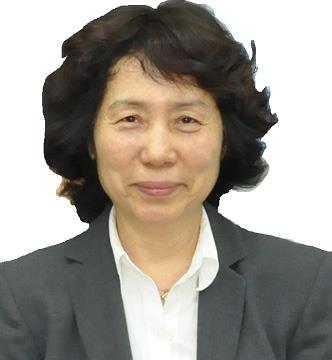Day 2 :
Keynote Forum
Jiin-Huey Chern Lin
National Cheng-Kung University, Taiwan
Keynote: A fast-healing, fully resorbable Ca/P/S-based bone substitute device (Ezechbone®) for dental and orthopedic applications
Time : 09:30-10:15

Biography:
Abstract:
Keynote Forum
Jimmy Kayastha
Dental Health Solutions Inc., USA
Keynote: Simultaneous double free flap reconstruction in patients with advanced oral squamous cell carcinoma: A case series and analysis of patient survival Background: The

Biography:
Abstract:
Keynote Forum
Fatma Elhendawy
Tanta University, Egypt
Keynote: Pediatric full mouth rehab under general anesthesia

Biography:
Abstract:
- Prosthodontics | Dental Materials | Digital Dentistry | Dental SEO | Dental Marketing | Dental Surgery | Oral Microbiology and Pathology | Endodontics | Dental Nursing | Oral Implantology
Location: Conference Hall

Chair
Jiin-Huey Chern Lin,
National Cheng-Kung University, Taiwan
Co-Chair
Fatma Elhendawy
Tanta University, Egypt
Session Introduction
Marwa Baraka
Alexandria University, Egypt
Title: Management of skeletal class III in mixed dentition with rapid maxillary expansion and face mask therapy Case report
Biography:
Marwa Baraka is working in Tanta University, Egypt
Abstract:
Introduction: Various forms of malocclusion are usually encountered in non syndromic cleft lip and palate, mostly affecting maxillary dental arch.
Objective: To assess the dental arch parameters in surgically treated unilateral cleft lip and palate Egyptian children with mixed dentition and compare them with those of comparable healthy non-cleft children.
Material and methods: Comparative cross-sectional study design was used. Twentysix non-syndromic children with repaired unilateral cleft lip and palate (UCLP), aged 6-9 years, were compared to twentysix healthy non-cleft children (control group) recruited from Faculty of Dentistry, Alexandria University. Both groups were divided into two age groups; 6-7 years and 8-9 years. For each subject, dental arch parameters were measured using dental study models.
Results: Mean maxillary arch depth and inter-canine arch width were significantly smaller in UCLP children than in non-cleft children in the age groups 6-7 and 8-9 years. Mean inter-molar arch width was not significantly narrower in UCLP children than in non-cleft children. Mean mandibular arch dimensions of UCLP children did not differ significantly from those of non-cleft children. The mean Goslon Yardstick score was 3. Conclusions: Children with UCLP, aged 6-9 year old, had significant reduction in mean maxillary arch dimensions compared to healthy matching non-cleft children except for inter molar arch width which showed no significant reduction. The average dental arch relationship in surgicallyrepaired UCLP children was fair according to Goslon Yardstick index.
Loghman RezaeiSoufi
Hamdan University of Medical Sciences, Iran
Title: Effects of Er:YAG, Nd:YAG, and 940 nm diode laser irradiation on the microtensile bond strength of self-etch adhesive
Biography:
Abstract:
Argishti Hayrapetyan
Yerevan State Medical University, Republic of Armenia
Title: Understanding the most successful incisal preparation designs of anterior teeth for porcelain laminate restorations
Biography:
Abstract:
Soliman Ouda Amr Ouda
King Abdulaziz University, Saudi Arabia
Title: The efficacy of Vizilite®Plus and Oral CDx in the diagnosis of oral cancer: A prospective study
Biography:
Soliman Ouda is working in King Abdulaziz University, Saudi Arabia
Abstract:
Mai Jarour
Private Practice, UAE
Title: Periodontal disease and diabetes: Association and connections
Biography:
Abstract:
Nicka Aghamohammadi
Shahid Beheshti University of Medical Sciences and Health Services, Iran
Title: Natural resistanceassociated macrophage protein 1 gene polymorphism is associated with chronic periodontitis not periimplantitis in an Iranian population: A crosssectional study
Biography:
Abstract:
Abeer Gamal Ali Ahmed
King Saud University, Saudi Arabia
Title: Lip repositioning surgery treatment option for a gummy smile: A case report
Biography:
Abstract:
Sung Ho Kim
Dankook University School of Dentistry, Republic of Korea
Title: Esthetic improvements through systematic diagnosis and treatment procedures in patients with unesthetic maxillary anterior proportion after orthodontic treatment: A case report
Biography:
Abstract:
Biography:
Marwa Baraka is currently working in Tanta University, Egypt
